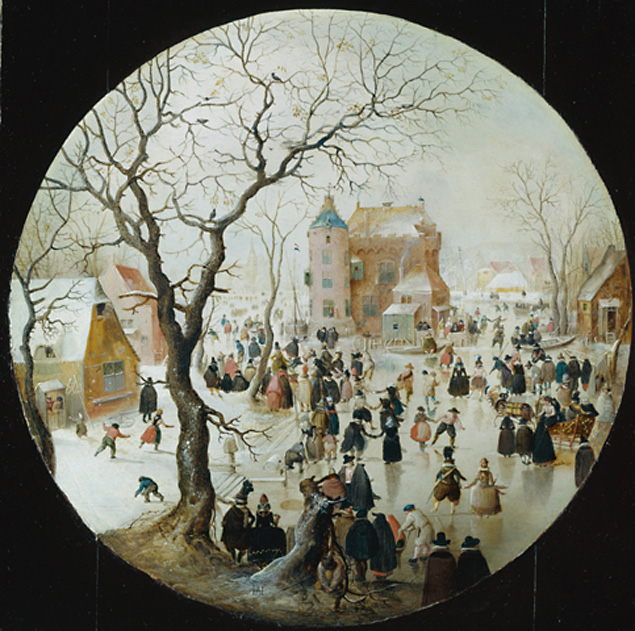With midwinter approaching, this week’s picture is Hendrick Avercamp’s A Winter Scene with Skaters Near a Castle. A busy work of art, teeming with anecdote, it shows a broad cross-section of seventeenth-century Dutch society – rich and poor, young and old alike – taking to the ice in holiday mood. Looking at it feels like studying a drop of water under a microscope. The past, in all its strangeness, swarms with vivid life.
The painter depicts a typical Dutch townscape traversed by a frozen canal. Husbands and wives and friends and lovers skate hand-in-hand, as if performing a quadrille, along the thoroughfare of ice. A wealthy family arrives in a richly decorated sledge drawn by a plumed and brightly caparisoned horse. A little boy bends to scoop up a handful of snow while another hurls his own already formed snowball at a fleeing girl, catching her on the back.
During the Middle Ages, Burgundian miniaturists had included vignettes of people surrounded by snowy scenery in manuscript illuminations illustrating the labours of the months. In the sixteenth century Pieter Bruegel the Elder had expanded on that tradition in several panoramic winter landscape paintings. But Avercamp, working some fifty years after Bruegel, was the first painter to specialise exclusively in the depiction of such subjects. Almost singlehandedly, he established the winter scene as one of the stock genres of Northern European painting.
The artist was, in part, responding to the new religious circumstances of his time. The Protestant Reformation, which had a particularly strong effect on Avercamp’s home town of Kampen, meant that painters could no longer rely on religious commissions for their livelihood. The rise of Calvinism, which proscribed religious art, led to the whitewashing of churches throughout the northern Netherlands. Painters were forced to court secular patrons and to...

ITP 34: A Winter Scene with Skaters Near a Castle, by Hendrick Avercamp
10-12-2000

